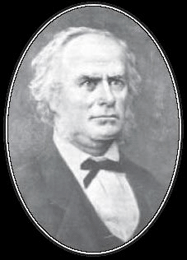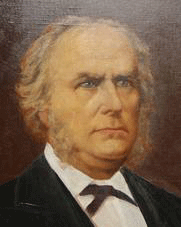|
A Person Who Should Be Famous: James Harrison
Answer
to Name
This Famous Person Game - November 2014
by Mike McLeod
|
 |
Most people don’t know his name or his face, but when you put ice in your glass, thank James Harrison who created the first commercial ice-making machine. Ted Carlton of Utah, Scott and Carolyn Brown of Memories Flea An’Tique Mall in Montgomery, Ala., Sherron Lawson, Roswell, Ga. did know of James Harrison’s contribution to modern society.
James Harrison was born in Scotland in 1816. His father was a fisherman, but he did not follow in his father’s footsteps. Harrison attended college and was apprenticed to a printer. Traveling to London, he worked as a printing compositor setting metal type. It may have been there that he noticed how the metal type was cooled by the ether he used to clean it. Or it may have been after he sailed to Australia to set up a printing press for a company.
|

James Harrison
|
Harrison stayed Down Under and worked for other newspapers as a compositor and editor and then went on to create his own newspapers in Geelong, Australia. He also created his first ice-making plant there, producing 6,600 lbs. of ice per day. This was too much for the town to use, so he moved to Melbourne, making ten tons per day there, again too much.
Harrison later won an award for proving that meat frozen for different periods of time was still edible and nutritious once thawed. This was a major break-through on the level of that of Nicolas Appert’s. Around 1800, Appert discovered how to preserve food through canning, and he won 12,000 francs from the French Government which offered the prize during the Napoleonic Wars for a way to preserve food for its armies. (Side note: Appert canned in bottles, but his process was used with more durable metal cans in 1810—unfortunately, the can opener was not invented until 1855. Oops.)
 Harrison was not the first person to conceive of the principles of refrigeration. Others demonstrated them as early at the mid-1700s. Benjamin Franklin discovered the cooling effects on a thermometer after applying ether that evaporated quickly. Inventor Oliver Evans used this principle of cooling in creating a design for a refrigerator in 1805, which he left on the drawing table to pursue other inventions using steam. Another inventor, Jacob Perkins, modified Evans’ design to get a patent for a refrigerator in 1834.1 Perkins had it constructed, but his refrigerator never made it into commercial use. James Harrison’s ice-making and refrigeration equipment was used commercially—initially by beer makers and beef shippers. Figures, doesn’t it? Harrison was not the first person to conceive of the principles of refrigeration. Others demonstrated them as early at the mid-1700s. Benjamin Franklin discovered the cooling effects on a thermometer after applying ether that evaporated quickly. Inventor Oliver Evans used this principle of cooling in creating a design for a refrigerator in 1805, which he left on the drawing table to pursue other inventions using steam. Another inventor, Jacob Perkins, modified Evans’ design to get a patent for a refrigerator in 1834.1 Perkins had it constructed, but his refrigerator never made it into commercial use. James Harrison’s ice-making and refrigeration equipment was used commercially—initially by beer makers and beef shippers. Figures, doesn’t it?
In the 1830s, another inventor Dr. John Gorrie also created an ice-making machine for cooling down his patients in Florida with ice.2 His invention was patented in 1851, but it did not go commercial due to lack of funding.
Harrison’s road to producing ice was rocky at times. In one experiment, he tried cooling about a ton of beef while shipping it across the Atlantic. His mistake was in trying to keep the beef cool with ice in a cold room rather than refrigerating the whole room. The ice melted before the end of the voyage.
Today, when we enjoy a cold drink, we should remember James Harrison—a person who should be famous.
-------------------------------------------
1 “Who Invented the Refrigerator?” www.science.howstuffworks.com.
2 “History of Refrigeration,” http://bergenrefrigeration.wordpress.com.
Learn
about more Famous People
|